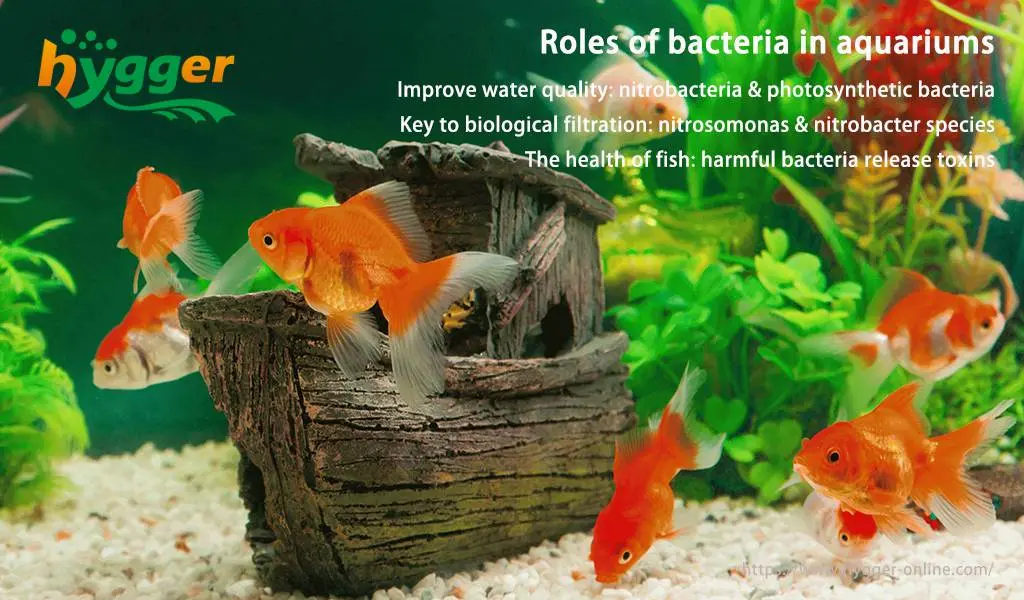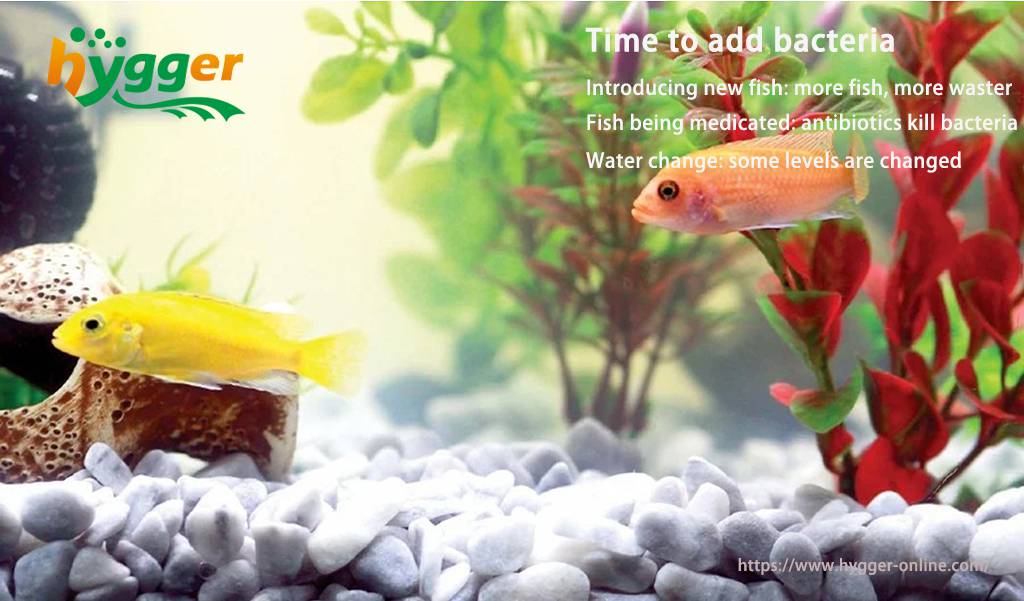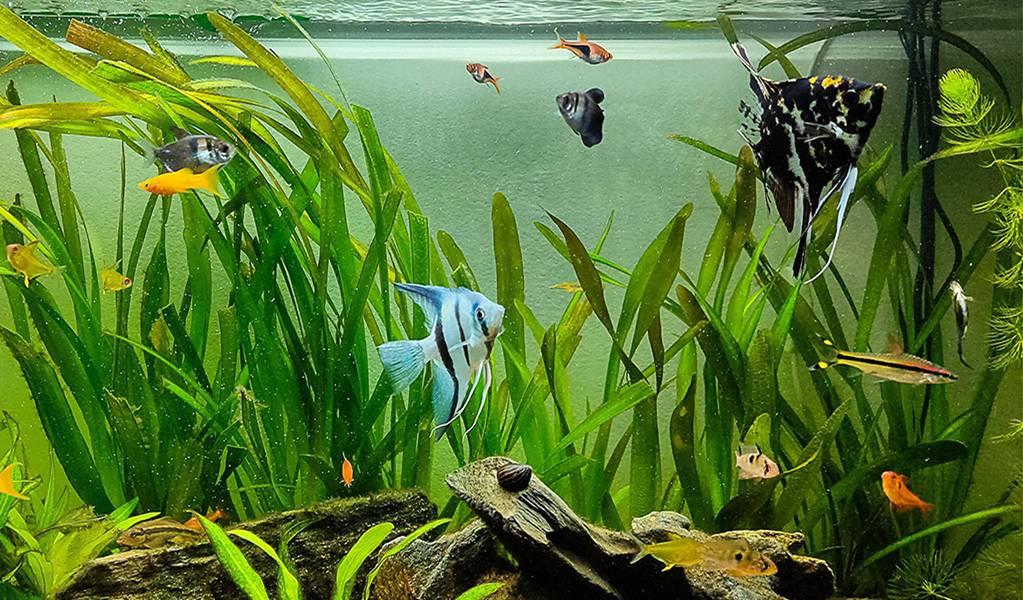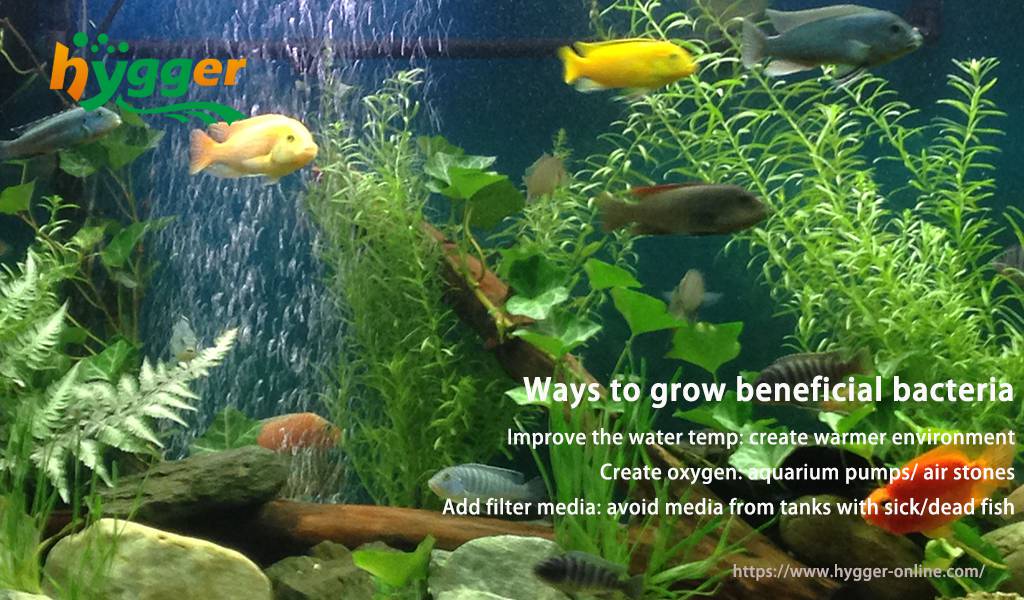Ideal aquariums always possess a significant amount of beneficial bacteria, keeping stable ammonia levels in aquariums. As beneficial bacteria are so crucial, how often should we add them to aquariums, and how to grow? Do not hurry, this article will shed some light on the bacteria.
Content Table
Bacteria in Aquarium
To begin with, we will offer a brief introduction to the roles of bacteria in aquariums.
Beneficial bacteria to improve water quality
- Nitrobacteria
Nitrobacteria are aerobic bacteria, which require sufficient oxygen but dislike intensive light. They can decompose the harmful substances in aquariums, such as ammonia and nitrite. Besides, there are two types of nitrobacteria – Nitrosomonas and nitrite bacteria.
- Photosynthetic bacteria
The photosynthetic bacteria photosynthesize under low oxygen and low light conditions. They can degrade uneaten food, fish feces, and some organic substances in the water. Meanwhile, they can also absorb the ammonia and nitrite in the water. Consequently, they play roles in keeping stable water quality. Nevertheless, they can make sense only with low oxygen or low light.
The key to biological filtration
An ideal filtration is helpful to maintain good tank quality. There are two crucial types of bacteria, including Nitrosomonas species and Nitrobacter species, which are essential for the nitrogen cycle. The cycle can decompose all types of waste in aquariums, including uneaten food, dead or rotted plants, dead fish, fish feces, and dead scales. Specifically, as the waste decays, it will produce ammonia, leading to the thriving of algae, loss of appetite, lethargy, damaged fins, and even death. However, the beneficial bacteria can break down the ammonia into nitrites, while nitrites will be converted to nitrates.
And eventually, the nitrates will be removed from tanks by other filtration. As a result, the water quality in tanks can be ideal for fish.

The health of fish
Aside from the beneficial bacteria, there are also bad bacteria in aquariums. When the bad ones come to aquariums, they will pose threats to the health of fish. If the harmful ones thrive in tanks, they will release toxins or invade the cells of fish, as a result, the fish may suffer disease. By the way, here are some types of bad bacteria, including Aeromonas, mycobacterium, and flexibacter columnaris.
Does It Need to Add Beneficial Bacteria to an Aquarium?
At present, you have learned the roles of bacteria in aquariums. Soon, we will get into a discussion about the necessity and time to add beneficial bacteria to a tank.
The necessity to add beneficial bacteria to a tank
- Provide a comfortable habitat for fish
There is harmful waste from uneaten and excessive food, dead fish and rotting plants, fish feces, and other things in tanks. And the waste will cause a loss of appetite, swollen eyes, and other diseases. However, the beneficial bacteria can convert the harmful waste to other substances, such as nitrites and nitrates, which are less harmful and will not be threats to fish.
- Good for fish flourishing
Beneficial bacteria make the habitat of fish more natural, but it is not sterile, as the sterile habitat is not good for the thriving of fish. In addition, beneficial bacteria can also improve the immune system of fish.

When should we add beneficial bacteria to a tank?
Generally speaking, there is no need to add bacteria because of the regular cycle. Nonetheless, here are some occasions you should add beneficial bacteria to your tank.
- Introducing new fish
More fish means more waste in your tank. The bacteria level at present may be unable to catch up with the new bacteria quickly, thus, it is recommended to add new beneficial bacteria alongside the new fish.
- Fish being medicated
When fish are sick, antibiotics will be needed, which can cure your sick fish but kill bacteria in your tank. Accordingly, it is necessary to add beneficial bacteria to your tank.
- Change the water in the tank
Though you probably only change a certain percentage of water in your tank, it also changes something in your aquarium, like pH levels. Hence, it is better to add beneficial bacteria to avoid the off-balance of pH levels and other substances.
How Do Add Beneficial Bacteria to Aquariums?
In this segment, we are likely to cover the frequency and methods of adding beneficial bacteria to aquariums.
How often do add beneficial bacteria to aquariums?
After establishing the initial cycle of aquariums, adding beneficial bacteria to aquariums is also necessary. It is feasible to add them twice a week, once a month, or at other frequencies, which is determined by the number of added fish, the health of fish, the status of water in tanks, and the instructions of bacteria. By the way, the frequency of adding beneficial bacteria should keep pace with introducing new fish or changing water. For example, if you change the water in your tanks once every two weeks, you should add beneficial bacteria twice each month. Nevertheless, you should avoid too many bacteria in your tanks.

How do add beneficial bacteria to aquariums?
The thing you should do is cycle your aquarium, which is the process of introducing bacteria. You can choose the hardy fish, which can tolerate ammonia higher than the normal level. After that, you can add bacteria. In the following month, feed the fish with less food, but gradually improve each week. By doing so, the beneficial bacteria can establish themselves with plenty of time and can handle waste in your tank. But attention please, you should check the ammonia level regularly with the aquarium water test kit when cycling your tank. Moreover, about cycling water in fish tanks, you can go for How to Cycle Water in the Fish Tank.
Growing Beneficial Bacteria in a Fish Tank
This part will share ways to grow beneficial bacteria in a fish tank. Let’s get started!
Improve the water temperature in tanks
A warmer environment is helpful to grow beneficial bacteria. Before improving the water temperature, you should know the accepted temperature range for your fish. By the way, an aquarium heater can increase the water temp quickly, and also keep the temp stable.

Create oxygen for your tanks
Oxygen is critically crucial for beneficial bacteria to survive in tanks. Here are some options to promote oxygen in tanks, such as applying aquarium pumps, adding air stones, or adding water from a certain height.
Add filter media
Filter media is the place to grow beneficial bacteria. You can add filter media from a well-established aquarium, as it is stable and can grow faster. Furthermore, you should not add filter media from tanks with sick or dead fish. In addition, hygger bio media is an excellent choice, which can host beneficial bacteria.
Reminder
After reading this article, we believe you have learned more about bacteria. However, seeing the dramatic risk of harmful bacteria, here are some pointers to prevent them.
- Apply an ultraviolet sterilizer and a filter built-in U-V light is recommended.
- Put your new fish in a quarantined tank
- Keep aquarium equipment clean
That is all for today! Thanks for your reading!


Definitely helpful
That was extremely helpful